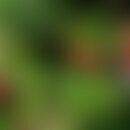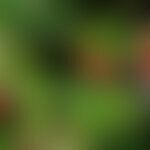Synonym(s)
DefinitionThis section has been translated automatically.
Dried leaves of the bearberry used phytotherapeutically.
Quality is defined in the European Pharmacopoeia (Ph. Eur.).
HMPC - Monograph: Traditional-use: Inflammatory diseases of the urinary tract
ESCOP - Monograph: Uncomplicated inflammatory diseases of the urinary tract (e.g. cystitis) when treatment with antibiotics is not necessary
Commission E-monograph: Inflammatory diseases of the urinary tract.
The quality of bearberry leaves (Uvae-ursi folium) is specified in the European Pharmacopoeia (Ph. Eur.).
Empirical medicine: Irritable bladder, bedwetting, urinary tract infections, diarrhea, bile duct complaints, as a labor remedy.
IngredientsThis section has been translated automatically.
Efficacy-determining ingredients are:
- at least 6% hydroquinone glycosides (especially arbutin and methylarbutin)
- flavonoids
- Tannins (gallotannins)
- Flavongylcosides
- Triterpenes(ursolic acid) and others.
You might also be interested in
EffectsThis section has been translated automatically.
Antibacterial against numerous pathogenic microorganisms and fungi. The hydroquinone glycoside is hydrolyzed in the body to hydroquinone, which in turn is conjugated to glucuron and sulfuric acid. In the draining urinary tract, under the influence of bacteria, the conjungate is deconjugated, hydroquinone is released and then has a bacteriostatic effect.
Spectrum of actionThis section has been translated automatically.
Bacteriostatic
Field of application/useThis section has been translated automatically.
According to Commission E: Bacterial urinary tract infections
Limited indicationThis section has been translated automatically.
No use in adolescents under 18 years of age according to HMPC monograph. No use during pregnancy and in nursing mothers.
Undesirable effectsThis section has been translated automatically.
Nausea, vomiting, abdominal pain-.
Local applications of extracts from Uvae ursi folium lead to an inhibition of melanogenesis (hydroquinone effect).
ContraindicationThis section has been translated automatically.
Hypersensitivity to the active substance
Kidney disease
Recipe(s)This section has been translated automatically.
The fixed combination bearberry leaves+goldrod+orthosiphon leaves consists of:
- Uvae ursi folium (bearberry leaves)
- Solidaginis herba (goldenrod)
- Orthosiphonis folium (Orthosiphon leaves)
It has an anti-inflammatory, slightly antispasmodic, bacteriostatic effect in an alkaline environment, promotes urinary excretion and is used as a support in inflammatory diseases of the urinary tract.
Another fixed combination consists of:
- Uvae ursi folium (bearberry leaves)
- Solidaginis herba (goldenrod)
and is available on the market as Cystinol® N solution.
Trade namesThis section has been translated automatically.
Bladder Kidney Tea Uroflux® vegetable tea, Bladder Kidney Tea Uroflux® tea infusion powder, Fugacid® bladder tea, Hernia tea, Hevert Bladder Kidney Tea, NB tea Siegfried®, Nephronorm® tea, Solefort® N, Uro Fink®.
LiteratureThis section has been translated automatically.
- Christ B et al. (1961) A photometric method for the determination of methylarbutin in bear-grape leaves (folia uvae ursi)]. Drug Research 11:129-131.
- de Arriba SG et al. (2013) Risk assessment of free hydroquinone derived from Arctostaphylos Uva-ursi folium herbal preparations. Int J Toxicol 32:442-453.
- Schindler G et al. (2002) Urinary excretion and metabolism of arbutin after oral administration of Arctostaphylos uvae ursi extract as film-coated tablets and aqueous solution in healthy humans. J Clin Pharmacol 42:920-927.
- Wenigmann M. (2017) Phytotherapy medicinal drugs, phytopharmaceuticals, application. Urban & Fischer, p.74-75
- https://www.awl.ch/heilpflanzen/arctostaphylos_uva_ursi/baerentraube.htm





